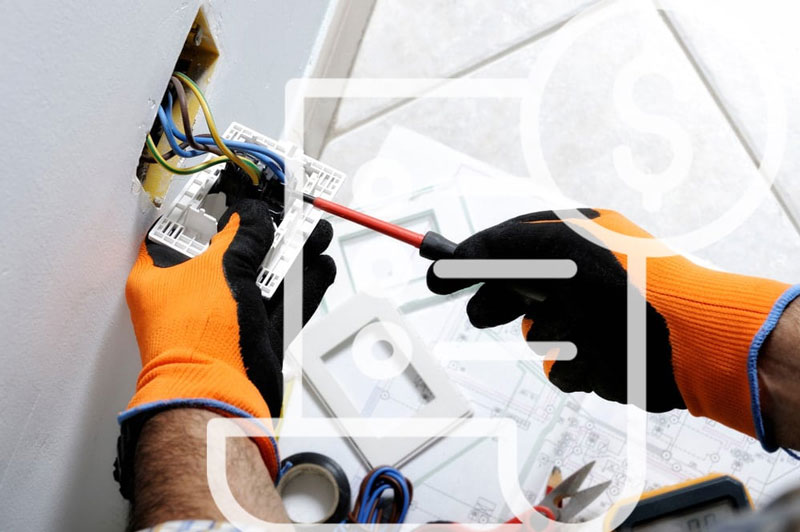Using the typical time and effort required to execute electrical work, you can provide upfront pricing to the customer. The homeowner will not be surprised when they receive the bill this way.
The danger is that technicians may reject the move to flat-rate electrical pricing.

Billing for Time and Materials (T&'M)
The tried-and-true Time and Material (T&'M) pricingtechnique has served us well for years when it comes to billing. With a defined hourly rateand a one-time trip fee, this low-risk, low reward method often features a list of popular electricalitems ridiculously overpriced on a sliding scale. Some examples of the T&'M billing system of hourly rates: $75 an hour; $37.50 per hour for a travel charge; and parts priced accordingly in the range of $1 to $49, $50 to $100, and so forth. All of the resources used and the hours worked on a project must be meticulously documented in this system for invoicing purposes. The T&'M billing system works well in particular scenarios and should be available at all times. To conduct business with most maintenance-type organizations, an electrical service organization must have a Flat rate pricingrather than Time and Material (T&'M) technique, i.e., hourly fee and an agreed-upon markup % for materials. An issue with T&'M billing is that companies can't take advantage of their skilled electricians.
Flat rate pricing concept
Numerous service providers, such as plumbers, HVAC technicians, and auto mechanics, now charge flat rates for their services. Once services and prices are determined, the technician has a certain amount of time and supplies to do the project. This technique could be called high risk, high return. The flat-rate pricing, or menu price, is used by the best electricalservice firms and franchised electrical service organizations. It's important to understand that a fixed charge includes all labor and supplies for an electricalproject. There is a predefined number of hours needed to perform the task and a trip cost, materials, and markups, all of which are included in the flat fee provided to the customer, unlike the Time and Material (T&'M) technique.
Flat rate pricing Operating system
If you have a flat rate pricing book, the software has all the information to justify it in a simple digital manner. Your company's overhead costs must be entered into the flat-rate pricingoperating system before you can begin charging customers. The software will calculate an hourly ratefor you based on your expenses and a profit margin specified by your organization once all of this data has been entered. Next, choose the markup ratios for your materials, permits, trip charges, rents, ladder fees, and any services you want to include in your prices. As a result, you've got the correct markup for your electrical services.

Benefits of Flat rate pricing
Flat-rate pricing has numerous advantages. This flat charge will help the company out a lot of its use wisely! Another perk is that clients like that the technician provides "upfront pricing" rather than sitting until the task is done to know precisely how much it will cost. Upselling opportunities, which can substantially boost profits, are still another perk.
The new method, new learning
Upselling is a learning experience that a company's technicians will need to undergo before implementing this new pricingmethod. This technique works very well with an experienced and skilled technician because the service can generally be done faster, beating the set hourly projected time in the flat rate fee and making the business more money. Typically, electricalservice providers earn between 30 and 50 percent profit on each service ticket they issue each day.
Electricalcontractors benefit from flat-rate pricingbecause establishing pricingand payment systems is more uncomplicated. A flat-rate pricingsystem is more productive than pricingfor time and materials, and clients appreciate knowing the expenses of a particular service upfront rather than being surprised later.
Electrician flat-rate pricing document
Every electric service organization must have the documents for an Electrical flat-rate pricingsystem.
The following information is included in an electrician flat rate pricingdocument:
- The customer's name, home address, email address, and contact number.
- The electrician's description of the services he provides, along with the flat-rate pricing.
- The customer's wish list of services, as well as a flat rate pricefor each service.



